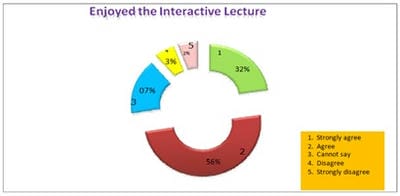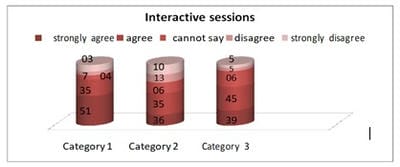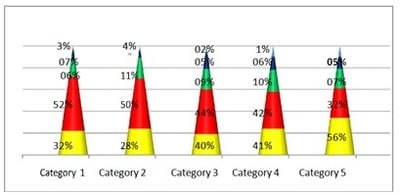Perceptions and Suggestions of II year M.B.B.S. Students Regarding Updated Pathology Teaching Curriculum: An Analytic Study
Kumar U. M.1, Ramesh Pande P.2*, Prasanna S.3
DOI: https://doi.org/10.17511/ijmrr.2019.i02.15
1 Mahesh Kumar U., Professor & HOD, Department of Pathology, Mahavir Institute of Medical Sciences, Vikarabad, Telangana, India.
2* Pankaj Ramesh Pande, Associate Professor, Prakash Institute of Medical Sciences, Urun Islampur, Sangli, Maharashtra, India.
3 S. Sai Prasanna, Undergraduate Medical Student, Prathima Institute of Medical Sciences, Karimnagar, Hyderabad, India.
Introduction: In most of the medical colleges of India, the knowledge regarding basic science subjects is taught mainly through didactic lectures, tutorials and practicals. And hence the system is more of teacher centered with less interaction or involvement from the students. There is a need to explore innovations, so as to sustain interest. Objectives: To introduce interactive teaching and assessment methods during lectures and examinations respectively and to elicit student’s perception about them. Materials and Method: A number of interactive methods were introduced in the pathology curriculum in a batch of 153 medical students of 2nd year M.B.B.S. Later the perceptions of the students were elicited regarding these sessions using a questionnaire based on Likert scale. Results: Validation of the scale indicated good internal consistency with Crohnbach’s alpha coefficient of 0.9. Majority (83%) of the students agreed or strongly agreed to like the interactive sessions. Similarly, 86% agreed or strongly agreed to like teamwork in group discussions and quiz sessions. Most popular interactive mode was MCQ’s followed by Cinemeducation. Most students were also of the view that interactivity during lectures keeps them active, more attentive in the class, makes the atmosphere more lively, also improved their communication skills, helps in retention of the topic, clearing doubts, improves attention span and hence results in better understanding of the subject. Conclusion: This project clearly proves that updated pathology curriculum is preferred by students. So, teacher should take a new role of facilitating the process of interactive learning rather than delivering elaborative lectures.
Keywords: Interactive teaching, Multiple choice questions, Pathology
| Corresponding Author | How to Cite this Article | To Browse |
|---|---|---|
| , Associate Professor, Prakash Institute of Medical Sciences, Urun Islampur, Sangli, Maharashtra, India. Email: |
Kumar UM, Pande PR, Prasanna SS. Perceptions and Suggestions of II year M.B.B.S. Students Regarding Updated Pathology Teaching Curriculum: An Analytic Study. Int J Med Res Rev. 2019;7(2):143-149. Available From https://ijmrr.medresearch.in/index.php/ijmrr/article/view/1048 |


 ©
© 

